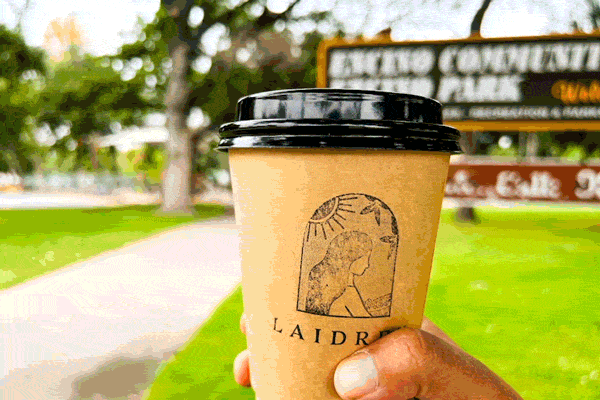L.A. hoped to learn from NYCâs congestion pricing rollout. Now what?

Good morning. Itâs Friday, June 14. Hereâs what you need to know to start your day.
- L.A. is still studying congestion pricing. New Yorkâs flip flop could change the equation.
- The Supreme Court rejects California manâs attempt to trademark Trump T-shirts
- Nine L.A. playgrounds near life-giving coffee shops
- And hereâs todayâs e-newspaper
You're reading the Essential California newsletter
Our reporters guide you through our biggest news, features and recommendations every morning
You may occasionally receive promotional content from the Los Angeles Times.
New Yorkâs congestion pricing flip-flop will make it harder to implement in L.A.
Los Angeles and New York have plenty of differences. For example L.A. has nice weather and great food. But we do share a common affliction: soul-crushing traffic.
Thankfully, there is a solution to this scourge (hint: Itâs not widening freeways). To make driving less of a smog-spewing, time-sucking vortex of misery, we have to drive less. Itâs that easy! đĽ˛
Transportation experts know how to make that happen: congestion pricing â charging people to drive on busy roads at peak times.
New York City was about to be the first North American city to implement a broad congestion pricing program, charging car drivers up to $15 daily to enter Lower Manhattan. The roughly $1 billion per year in revenue would have gone to the cityâs struggling transit system.
But in a stunning reversal, Gov. Kathy Hochul ordered the program to be paused indefinitely just weeks before it was set to begin, after years of strongly supporting it.
L.A. Metro officials had hoped to see NYCâs program in action to learn from the rollout, they told me this week. Now theyâre taking notes on the backlash the program faced and the backpedaling that halted it â maybe forever.
L.A.âs own congestion pricing research hasnât come far
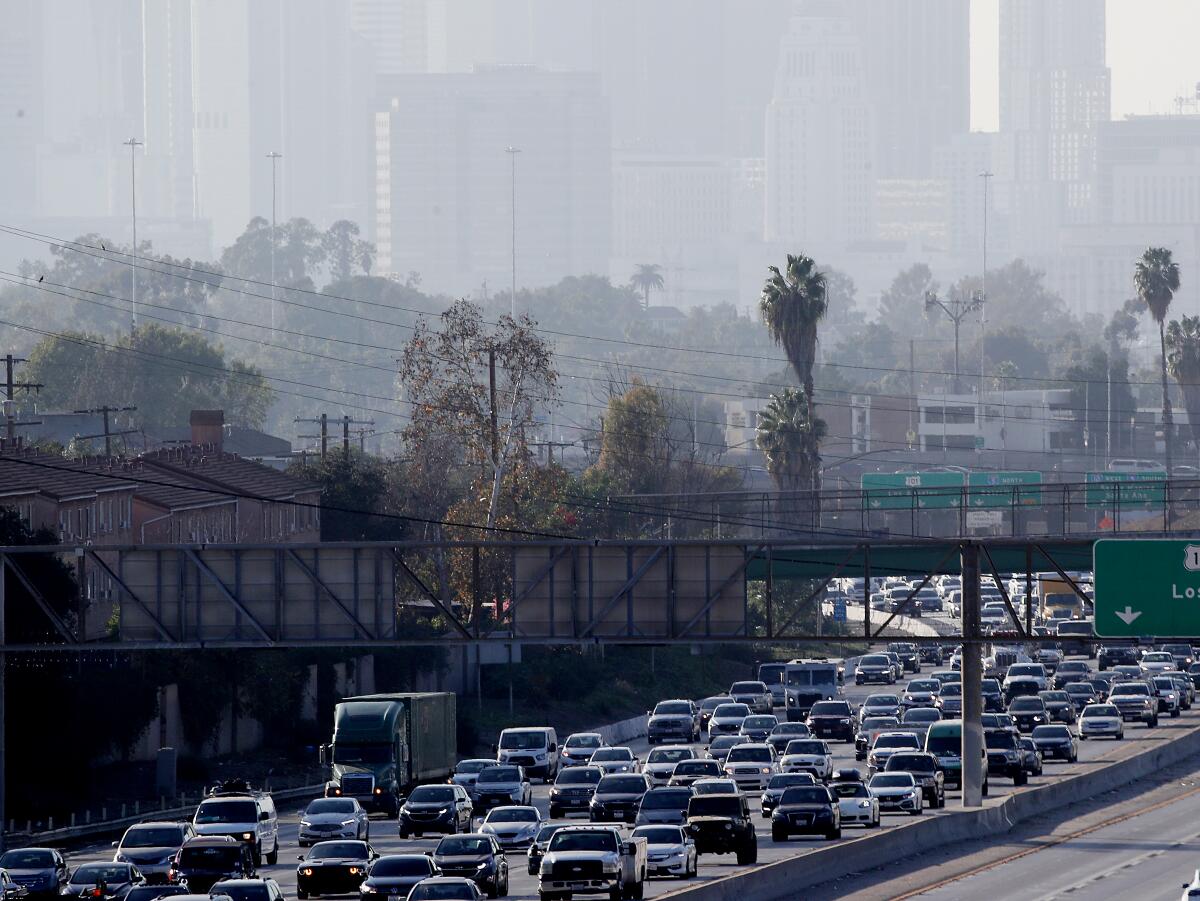
Transportation officials have been studying the feasibility of congestion pricing in L.A. County since 2019.
L.A. Metro has been modeling the impacts of charging commuters to drive their cars into a few high-traffic zones:
- Along the 10 Freeway between downtown L.A. and Santa Monica
- On arterial streets in downtown L.A. and the many freeways that cross through it
- Through windy canyon roads and freeways (mainly the 405 and 101) that link the San Fernando Valley to the L.A. Basin
Nearly five years in, that initial study is still TBD. San Francisco transportation officials paused a similar study in 2022.
â[Weâre] working to put the best possible recommendations forward to our board based on our technical modeling and our public outreach,â said Mark Vallianatos, project manager for Metroâs Traffic Reduction Study.
Itâs not clear when Vallianatosâ team will have those recommendations ready. They have sought more funding to further explore pricing, but state budget negotiations have delayed it.
The agency also would not disclose the prices theyâve been tinkering with, except to say they are âsignificantly lower than New Yorkâs [$15] daytime price,â according to Vallianatos.
âWe are looking at whatâs the lowest toll we would have that would impact enough drivers to make the rest of the drivers better off,â he said.
Congestion pricing is unpopular everywhere (at first)
A recent poll showed that 63% of New Yorkers opposed the plan (though 44% of respondents said they donât really travel to Manhattan).
Essential California readers tilted toward opposing congestion pricing when we asked last year. One sent an uncryptic âFâ NO.â
âI do not have the privilege to choose what time my commute is,â wrote Elisabeth O. âAlready I am paying for crazy things like gas, food and shelter. I cannot afford more expenses.â
Michael Manville, a professor of urban planning at the UCLA Luskin School of Public Affairs, has studied congestion pricing and its political acceptability for roughly 20 years. His thoughts on NYCâs congestion pricing implosion? âShocked, but not surprised.â
âCongestion pricing has always been a very big lift,â he said, adding that itâs possible political leaders elsewhere will get more âgun-shyâ about trying the policy.
âHad New York moved forward, I think it would have opened up some breathing room for Los Angeles and San Francisco to take their fairly dormant proposals and rev them back up,â he said.
Congestion pricing has cut traffic in Singapore for decades. It was unpopular in Stockholm when first implemented, but support grew to over 70%. In London, the U.S. Embassy refuses to pay over $18 million in congestion charges.
Does L.A. need to change its pitch for congestion pricing?
Studies have shown that reducing traffic can mean better air quality, higher transit ridership and safer streets. But Manville argued leaders should frame their pitch a little differently: as âa great thing for drivers.â
âThe people who benefit the most are the people who pay the toll because they get to drive unimpeded,â he said. âYou get something in return for your money, which is a bunch of your time back.â
Plus, congestion pricing isnât a completely new concept in L.A., according to Manville.
âIf you get on those Express Lanes that Metro runs, you pay a toll and you save a bunch of time,â he said. âAnd you can have more of that.â
That remains a tough sell in sprawled, car-dependent L.A., where public transportation isnât nearly as abundant or popular as New York. And if congestion pricing stalls or dies (Hochulâs delay order could face legal challenges), what chance does it have here? L.A. Metroâs study concepts could help begin to answer that question.
âEveryone in L.A. hates traffic and this is the one way to help fix it â [but] people donât like to pay for things,â Vallianatos said. âWhen these two powerful forces collide, what happens? We donât exactly know.â
Todayâs top stories
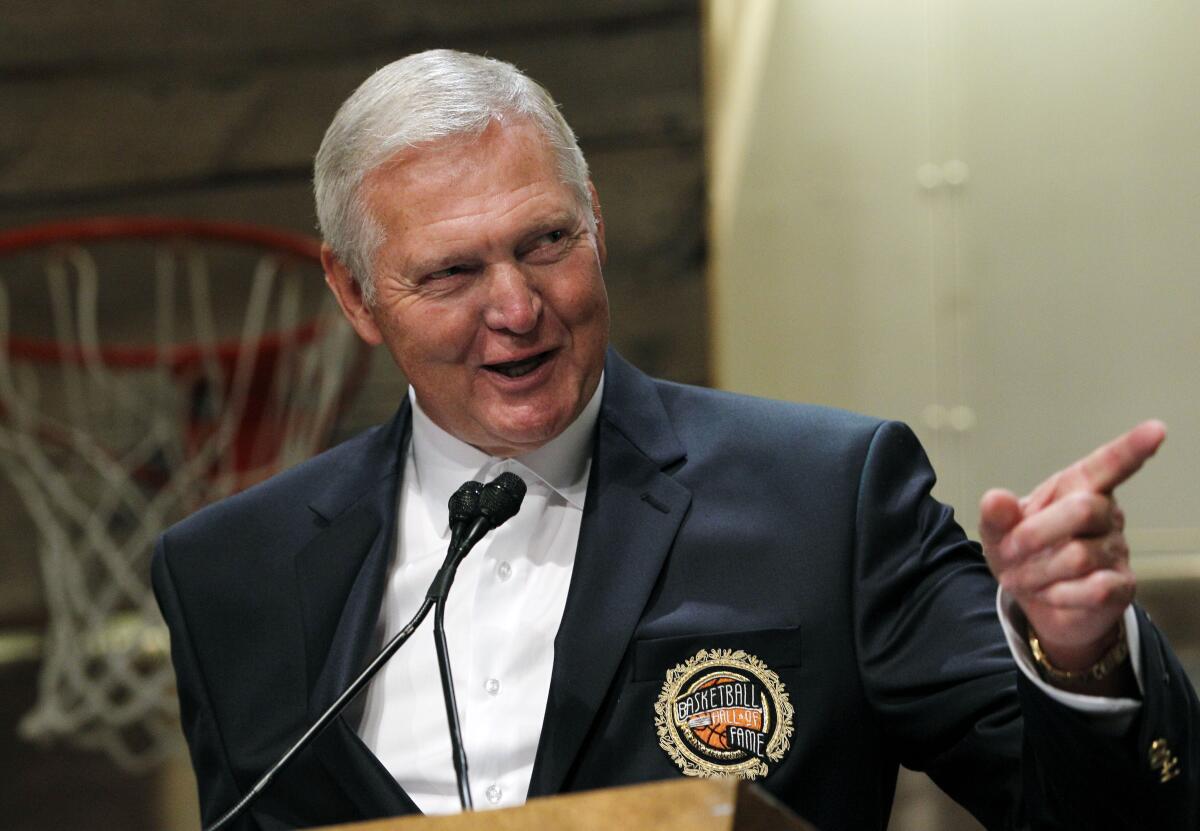
Jerry West dies
- Jerry West, Lakers legend and architect of âShowtimeâ era, dies at 86.
- Column: Laker legend Jerry Westâs final legacy sadly includes estrangement from Lakers.
- How Jerry West became the NBA logo â and why David Stern never admitted to it.
Crime and courts
- The Supreme Court upholds FDAâs approval of abortion pills for early pregnancies.
- Copper thieves leave 6th Street Bridge â the âRibbon of Lightâ â completely in the dark.
- Tourists were zip-tied and robbed in an L.A. short-term rental. Should it even have been open?
- D.A. notes progress in search for âGeneral Hospitalâ star Johnny Wactorâs killer.
- A grand jury report faults San Francisco for inadequate climate threat planning.
- The Supreme Court rejects a California manâs attempt to trademark Trump T-shirts.
- Disneyland union files charges against Disney in Mickey button dispute.
- Ukrainian family of slain âRustâ filmmaker again sues Alec Baldwin, other producers.
Politics
- At Nixon Library, Kennedy Jr. calls for cutting U.S. military budget in half.
- âNot a happy electionâ: Why this star-studded Hollywood fundraiser is so crucial for Biden.
- Californians less likely to vote cite a common reason: They donât like the presidential candidates.
More big stories
- After âsignificantâ vandalism overnight, Cal State L.A. president says encampment must end.
- Top manager of Californiaâs largest water supplier accused of sexism and harassment.
- âJust not afraid of humansâ: Coyotes plague Mar Vista as neighborhood pets disappear.
- L.A. General is closing a mental health clinic. Longtime patients worry about the move.
- State regulators identify wildfire neighborhoods targeted for insurance relief.
- Swanky airport lounges are arriving at LAX, like this Chase one. But who can get in?
- A draft resister, a judge and the moment still binding them after 54 years.
- Los Angeles council OKs study of removing police from traffic enforcement.
- Occidental trustees vote against divesting from Israel-linked companies.
- Now bankrupt, MedMen owes millions to other companies. Meet the cannabis CEO who called them out.
- One California city is letting owners sell ADUs, and others may follow. Will it be a housing game-changer?
- UCLA commencement goes on amid campus tension over protests, violence and policing.
- You can help name L.A.âs newest dinosaur fossil. Just donât call it Dino McDinoface.
Get unlimited access to the Los Angeles Times. Subscribe here.
Commentary and opinions
- Anita Chabria: The abortion pill is safe. Is your uterus?
- Editorial: The history, and hypocrisy, of the upside-down American flag.
Todayâs great reads
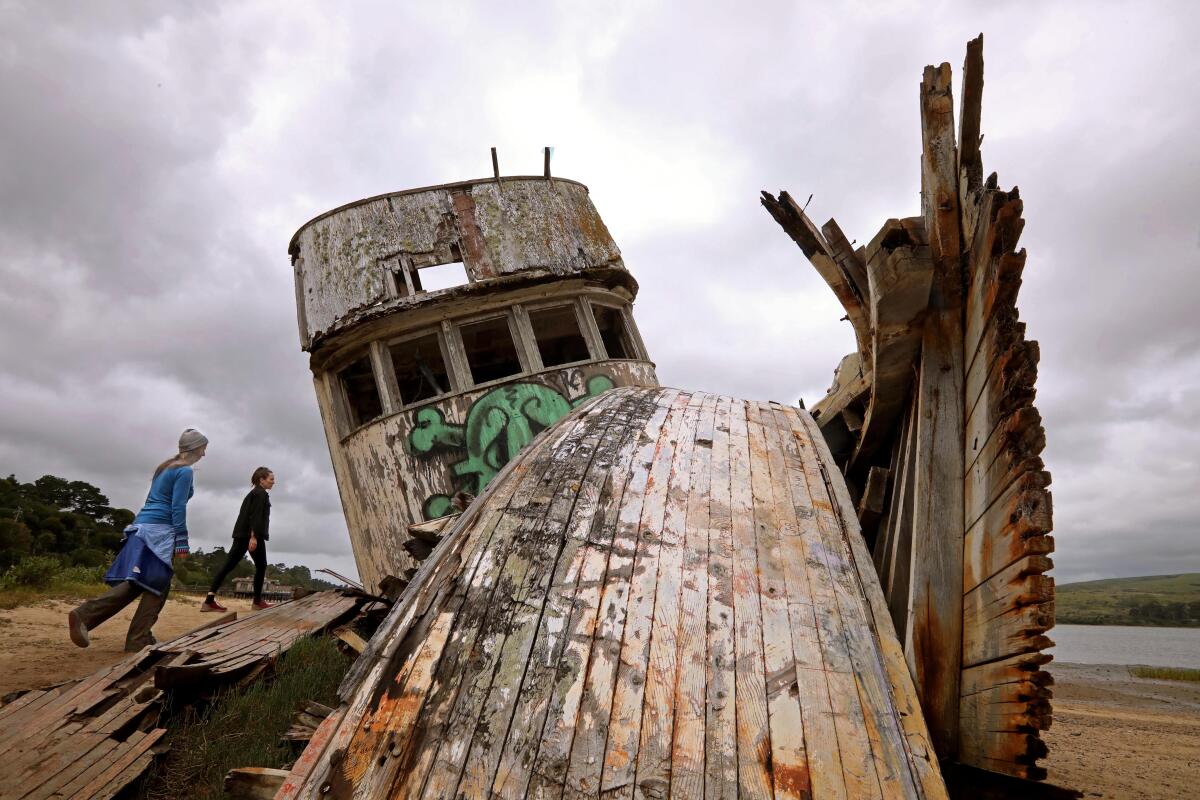
This California âshipwreck,â beloved but rotting, has got to go, officials say. The Point Reyes has been the backdrop for engagement photos and music videos, for quiet lunch breaks and illicit nighttime beers. People climbed it, trashed it, and, at one point, accidentally set it on fire. It has been beloved and abused. And its days appear to be numbered.
Other great reads
- She took over âBridgertonâ as Colin and Penelope moved to the fore: âThe pressure was immense.â
How can we make this newsletter more useful? Send comments to [email protected].
For your downtime
Going out
- âCaffeine for you, play time for your kid: 9 L.A. playgrounds near life-giving coffee shops.
- đżExplore the California spot serving up weed country fun the wine country way.
- 𪊠The Eagles are headed to the Las Vegas Sphere for eight shows this fall.
Staying in
- đş How to watch the 2024 Tony Awards.
- đ âDesperately Seeking Susanâ director Susan Seidelman takes stock of her groundbreaking career in her new memoir, âDesperately Seeking Something.â
- đ§âđł Hereâs a recipe for Spring pea carbonara.
- âď¸ Get our free daily crossword puzzle, sudoku, word search and arcade games.
And finally ... a great photo
Show us your favorite place in California! Weâre running low on submissions. Send us photos that scream California and we may feature them in an edition of Essential California.
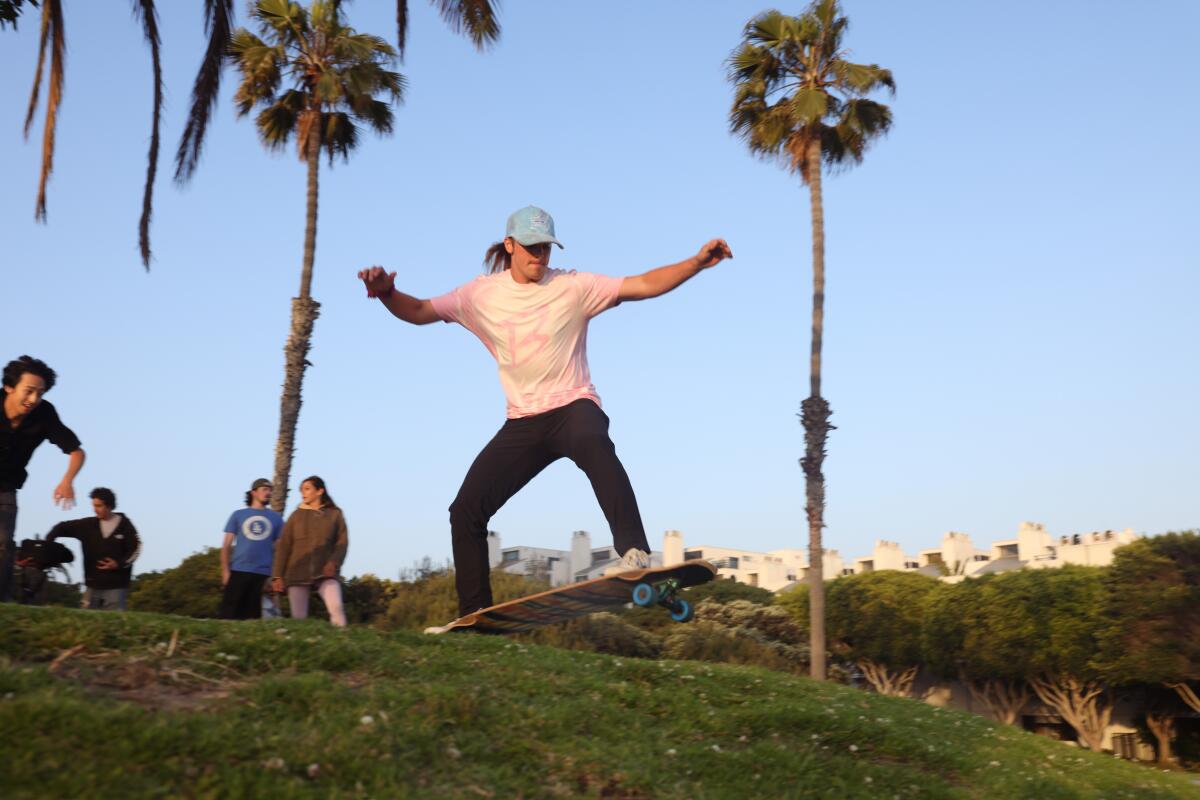
Todayâs great photo is from Times photographer Dania Maxwell at a weekly L.A. skate meetup that is all about the vibe.
Have a great day, from the Essential California team
Ryan Fonseca, reporter
Kevinisha Walker, multiplatform editor and Saturday reporter
Karim Doumar, head of newsletters
Check our top stories, topics and the latest articles on latimes.com.
Sign up for Essential California
The most important California stories and recommendations in your inbox every morning.
You may occasionally receive promotional content from the Los Angeles Times.
